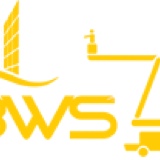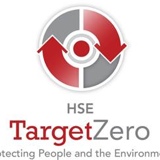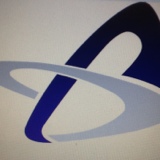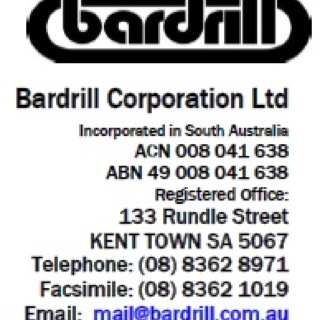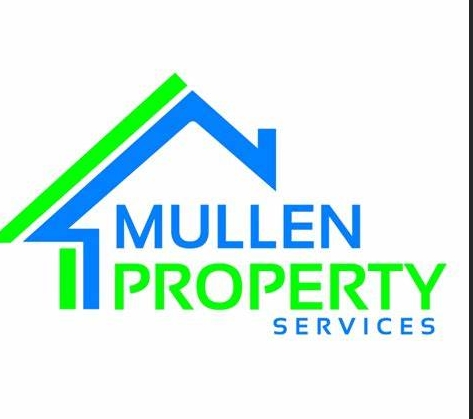Information
-
Document No.
-
Audit Title
-
Client / Site
-
Conducted on
-
Prepared by
-
Location
-
Personnel
1. Safety and Environment Philosophy and Policy Statements
-
Building Wash Services (BWS) recognizes the importance of safety and environment being of prime importance on this project. All work activities will be carried out with careful consideration of the safety and health implications to all those working on or near the job. Due care will be taken to minimise any adverse environmental impacts.
Management and employees of BWS will work together with other site workers to achieve the project targets.
Key aspects of BWS’s approach to safety management include:
• Safety considerations built into the project planning
• All employees are required to be actively involved in site safety
• All employees and sub-contractors to have appropriate safety and environment inductions
• All high risk work processes to have an approved JSA or task analysis and have standard procedures followed
• Employees and sub-contractors to have appropriate competencies for the job
• There will be pro-active identification and management of hazards and environmental risks
• All incidents, near miss events and property damage will be reported and appropriately investigated
• Emergency plans will be in place
Associated policy and procedure documents are referenced as follows:
• Health, Safety & Environment Policy Statement is included as Appendix 1.
• Client Reference/Tender/RFP Documents
2. Safety Targets
-
BWS plans to actively contribute to the overall success of this project. This includes the achievement of the following project safety targets:
• Achievement of zero injuries during the life of the project (this includes achievement of zero rates for MTI and LTI measures)
• All injuries, incidents and near miss events to be reported and investigated in accordance with BWS’s health, safety and environment procedures
• Safety Audit Schedule and JSA meetings completed in full i.e.
o Toolbox meeting to be held daily
o Completion of daily audit schedule
o Completion daily mobile plant pre-start checks
o All non-conformance occurrences rectified in timely manner
o Daily and “new job” JSA sign-on completed for all employees and sub-contractors
Reports will be provided to the client (as required) that summarise performance against the above KPIs.
3. Scope of Work
-
The project scope of work is summarized as follows:
- High spec exterior chemwash of all building elevations and windows
- Traffic plan and Task Analysis attached
4. Roles and Responsibilities
-
Project Manager
• Overall responsibility for project performance
• HSE Management Plan development and implementation
• Project team selection, including sub-contractor management and safety performance
• Safety aspects of materials and equipment used on project
• Client liaison
• Sub-contractor liaison
• Project pricing
• Variation management
Site Manager (Truck Boss)
• Site HSE audit programme
• Staff induction
• JSA initial briefing to employees and ensuring daily JSA sign-on by all
• Employee and sub-contractor sign-on to JSA
• Safety communications including daily tool box meetings. Includes seeking input from employees
• Ensures that requirements of work permits are communicated to relevant employees and sub-contractors
• Co-ordination of daily site safety audits
• Employee and sub-contractor supervision
• PPE compliance
• Incident Reporting
• Achievement of safety compliance including procedures, rules, and PPE
• Maintenance of site housekeeping to high standard
HSE Manager
• Preparation of JSA or Task Analysis
• Safety & environment communications
• Incident external reporting and investigation
• Statistics and reporting (Safety and Environment)
Project Employees
• Taking responsibility of their own safety and that of their work colleagues
• Identify and control hazards (report uncontrolled hazards)
• Report accidents, near miss events, environment incidents and property damage
• Adhere to procedures and rules
• Wear correct PPE for the job
• Participate in safety communications including relevant inductions, JSA sign-on and tool box meetings
• Maintenance of a tidy and orderly worksite
• Responding appropriately to emergencies by:
o Contacting emergency services and relevant management
o Making area safe and proceeding to assembly point in case of evacuation -
The following project management structure and respective responsibilities have been established for this project.
-
Management Structure
-
Management Responsibilities
5. Employee Induction, Training & Records
-
There is a requirement that all workers on BWS project sites have the necessary skills and experience for the job they are performing. It is the responsibility of management to ensure that workers under their direct control have the ability to do their job without causing harm to themselves or others.
All new employees will undergo a BWS company induction that includes health, safety and environment management elements. Employees will be informed of their duties and responsibilities as they relate to health, safety and environment. Details of all such training will be recorded and retained. The minimum safety induction requirements for BWS employees on this project are:
• BWS employee induction
• Other job specific inductions as required i.e.
Employee qualification, induction, and training records, and emergency contact details, are retained at the BWS Office. These records are required to be maintained for 10 years. A Training and Competency Register (Appendix 7) provides details of the qualifications, training and competency of individual employees.
6. Hazard Identification and Control Process
-
The effective identification and control of hazards is essential for the achievement of project goals. Hazard identification is achieved by the following methods on this project:
• The preparation, approval and employee sign-on for specific JSAs
• The implementation of a regular safety audit schedule
• Identification of hazard and environment risks by employees during their normal work activities
Any newly identified hazards should be reported either verbally or in writing to the Site Manager or representative. The HSE Manager is responsible for evaluating the significance of the reported hazard and ensuring that appropriate controls are implemented. Where necessary, the Project Hazard Register (Appendix 2) will be updated. The Project Hazard Register is to be reviewed during the preparation of each JSA to ensure that all hazards are identified and appropriate controls are recorded and implemented.
Site safety audits are to be carried out prior to work starting on the project and thereafter on a daily basis. A HSE Audit Checklist is available in Appendix 3 for this purpose. Any health and safety issues arising are to be addressed immediately and the hazard register updated. New hazard details are to be highlighted. Copies of the completed audits are to be retained by the Site Manager.
A hazard board will be erected adjacent to the site access point. The hazard board will highlight significant hazards on a daily basis.
The Health and Safety in Employment Act requires that all “significant hazards” are subjected to a process of control. The range of control options is known as the “hierarchy of controls”. The three options must be considered in order as follows:
• Eliminate – involves replacing or removing the hazard completely
• Isolate – using guarding or barriers to separate hazard from people
• Minimise – a range of options including procedures, training, modification to equipment and processes, signage and the wearing of personal protective equipment (PPE).
Where hazards are unable to be eliminated, and isolate or minimise controls have been selected, there will be a need to monitor the controls on a regular basis. The daily audit schedule provides an opportunity to review hazard controls that are visible on the job sites.
7. Evacuation and Rescue Plans
-
Details of these will be provided to all project personnel during the mandatory “Site Induction”.
Emergency Procedures
• All personnel including contractors, sub-contractors and visitors must sign the access register before entering the work site
• Fire extinguishers are available in each BWS vehicle
• The location of the emergency assembly point will be confirmed at site induction. Emergency procedures, including confirmation of emergency assembly point, will be reviewed at least weekly during the daily toolbox meeting.
• Emergency Contact Numbers:
o Emergency Services (111)
o Simon Green (021523301)
• Where possible, make work area safe, turn off equipment, notify others in work area and proceed to assembly point
• Await instructions from the Emergency Controller
• Do not start work until notified by BWS Site Manager
8. Rules and Procedures
-
The following Cardinal Safety Rules apply to employees and contractors. Any employee breaching these rules will be liable to dismissal at the first offence:
• Supply, possession or consumption of alcohol or illegal drugs on site
• Operating plant, equipment, or handling materials in a negligent manner likely to cause harm to any person
• Serious breaches of safety rules
• Fighting
The following General Safety Rules apply:
• Every person must know and observe all safety rules applicable to their work. Each person’s compliance with all safety rules, including the wearing of appropriate PPE is a requirement for continued employment.
• All the necessary site inductions must have been completed prior to site access
• All hazardous situations and accidents/incidents (including environment and plant damage) must be reported to the site manager/truck boss
• PPE to be worn as required
• Tampering with safety equipment including extinguishers and alarm systems is considered a serious offence and could result in disciplinary action
• Isolation procedures must for followed at all times
• Equipment must not be operated unless guards are in place
• Smoking is permitted in approved areas only
• Compliance is required with all emergency procedures
• Emergency equipment must be clearly signposted with clear access at all times
• Compliance is required with client Drug Testing Policy and Procedures (including random drug testing of employees and contractors)
Sub-Contractors
• All cardinal and general safety rules above are applicable to sub-contractors
• Are required to report to the site manager before commencing any work at the site.
• Are required to have effective health and safety policies and procedures.
• Contractors must have signed off on the Sub-Contractors Safety Agreement before commencing work (Refer Appendix 4)
9. Procedures for Control of Elevated Work Platforms/ Cherry Pickers
-
The operation of EWPs is restricted to those who hold current operator certification. The following rules apply with respect to the operation of such equipment:
• All operators of this equipment must have appropriate training and certification
• Daily prestart equipment checks to be completed
• Traffic management plan (if applicable) requirements to be adhered to in full
• PPE including hi viz to be worn by everyone who enters the work area
10. Safety Inspections and Audits
-
A Site Safety Audit is required to be completed prior to commencement of project and thereafter on a daily basis throughout the duration of the project. A Site HSE Audit Checklist form is available in Appendix 3 for this purpose. Contractor employees are required to participate in the audit at least weekly. The Site Manager or representative may be required from time to time to participate in client initiated audits.
The Site Manager is responsible for ensuring the regular completion of these workplace audits. The actual audit is encouraged to be carried out by different employees from time to time. All employees should be given the opportunity to participate in the hazard identification process.
Comments are to be recorded on the audit form to verify compliance with audit standards.
Non-compliances are to be noted on the audit checklist. Corrective actions are to be recorded for each such non-conformance instance. The completed safety audit checklist should be regularly reviewed to ensure that the identified corrective actions have been completed.
The completed audit checklist must be reviewed and signed off by the Site Manager.
Audit data will be retained and made available to the client on request.
11. Inspection Programme for all Equipment
-
All equipment brought to site under BWS control is required to be appropriately warranted and/or certified. This includes:
• Warrant of Fitness/Certificate of Fitness for vehicles that operate on public roads
• Appropriate and current certification for all lifting/hoist equipment/slings
• Current electrical fitness tags for all electrical equipment and supply leads
A check of the above certification is included in the daily Mobile Plant/Equipment Audit Schedule. Equipment that does not meet the required certification will be removed from site until such time as the required certification is re-confirmed.
12. Sub-Contractor Safety Management System
-
Sub-contractors (Contractors) engaged by BWS on this project will be required to complete the BWS’s Contractor Sign-off, which outlines BWSs’ requirements of contractors with regard to health and safety performance. In particular the document requires the contractor to carry out the following:
• Identify and effectively manage hazards under their control
• Report and investigate injury and near miss accidents
• Report serious harm accidents to BWS and Dept of Labour
• Ensure the safety of their employees, sub-contractors, other site workers and members of the public
The site manager is responsible for ensuring that contractors are briefed on their responsibilities and where appropriate have signed off on the contractor agreement/induction form (Appendix 4). The type of work for which sub-contractors may be engaged would include the following:
• No sub-contractors are expected to work on this project at this point
Selection criteria for Contractors
Contractors will be required to demonstrate to BWS that they are capable of carrying out their work in an efficient and safe manner. Selection criteria for contractors will include:
• Relevant experience with the specific type of work
• Appropriately qualified staff
• A willingness to comply with BWS health and safety requirements. This is verified by signing the Contractor Induction form.
Sub-contractors will be required to complete a “Sub-Contractors, H&S Pre-Qualification Questionnaire” (refer Appendix 5) which will be used to evaluate their suitability to work for BWS.
Sub-contractors will be required to identify and control hazards associated with their work activities. This will include participation in the JSA process, including the preparation, sign-off, employee pre-start briefing, and daily sign-on. They will be required to report all incidents to BWS management.
Hazard Identification
Before starting work the contractor will identify and assess hazards associated with the work and document those determined to be significant hazards. This will be achieved via the JSA process.
BWS will advise the contractors of any special hazards associated with the area in which the contractor will be working, for which the contractor could not reasonably be expected to be aware.
Hazard Control
The contractor will advise BWS of any hazards likely to result in harm to any employees, other contractors, or members of the public, and the measures they have put in place to control those hazards.
The contractor will put in place a system for monitoring identified and controlled hazards and identifying new hazards during the course of the contract. This will include the completion of a JSA for the job.
Reporting of Incidents/Accidents
The contractor will ensure that there is full awareness among their workers of the incident reporting requirements of BWS. All incidents/accidents shall be reported to BWS immediately together with information on the immediate steps taken to prevent a recurrence.
Serious harm accidents incurred by the contractor are required to be reported directly to BWS.
13. PPE Standards for Employees and Sub-Contractors
-
The wearing of PPE forms an essential component of the hazard control system. The table below details the minimum requirement for PPE whilst working on the project site. Other specialised PPE may be required for different hazardous situations e.g. for handling chemicals, working in high noise areas. The specifics of this will be detailed in the JSA.
-
Add media
-
Note, PPE needs to be maintained in good condition and should be replaced if damaged or the “use by date” is about to expire. Employees should contact their manager/team leader if in any doubt.
14. Procedures for High Risk Activities
-
All high risk activities are detailed in the relevant JSA. The JSA provides details of the work steps involved and the associated hazard controls. Particular high risk activities to be covered in the JSA include:
o Abseiling work
o Working on roofs
15. Safety Communications Plan, Tool Box Meetings
-
Safety communications are the joint responsibility of the Project and Site Managers. The following client/BWS/sub-contractor communications form an integral part of that process:
• Site Manager (or delegate) to provide daily pre-start briefing to work team. Topics that may be covered at this briefing (toolbox meeting) include:
o JSA requirements for the day
o Details of any specific hazards that are relevant for the day
o Points of note from audits and/or inspections
o Updates on any accidents or near miss events
o Information on other work activities in close proximity to the job site
o Opportunity for team input on safety matters
o Any special safety focus for the day
• Statutory communications to external agencies include:
o Notifiable work
o Serious harm
16. Electrical Safety
-
Poor electrical safety practices can lead to serious accidents. The following basic rules must be followed:
• All electrical equipment brought onto site (power tools, power supply leads) must have current electrical fitness tags
• Where electrical fitness tags are due to expire prior to the end of the project, the relevant equipment must be re-inspected and certification tags renewed. -
16. Electrical Safety
17. Incident Reporting, Investigation & Management
-
All incidents including injury accidents and near miss events must be recorded in the “Injury & Investigation Register”. The register contains three different types of form as follows:
• Injury/Incident Form
• Investigation Form
• Serious Harm Form
Incident Forms are available in Appendix 6
All accidents or incidents are to be reported immediately to the Site Manager and the appropriate accident form completed accurately. The Site Manager is responsible for ensuring that reporting requirements to the Client Manager are fulfilled, and an incident investigation initiated.
The Site Manager is responsible to ensure that the appropriate accident/incident report and investigation report have been completed. The investigation may be completed internally or external expertise may be used to assist.
The investigation process involves reviewing a range of aspects that provide background on events leading up to the incident. These aspects include:
• Location and timing
• Nature of incident and any ensuing harm or property damage
• Involvement of witnesses or other parties to the incident
• Existing conditions at time of incident including practices, procedures and safety precautions in place
• Causes or contributing factors
• Preventative or corrective actions
The purpose of the investigation is not to apportion blame but to identify cause or contributing factors, and to agree preventative actions that will ensure that this type of incident does not occur again in the future. It is most important that the preventative actions are recorded on the Investigation Report and that responsibilities and timing are assigned for the completion of the actions.
It is the responsibility of the HSE Manager to maintain the register and provide the requisite management reporting to the client. Refer to the “Safety Communications Plan” for client reporting requirements.
Report forms are included in Appendix 6 of this plan.
Serious Harm Accidents
In the event of serious harm, it is required that DOL is verbally notified immediately.
This should be followed up by completing the appropriate “Serious Harm” form in the back of the Injury & Investigation Register. The HSE Manager is responsible for completing this serious harm form and forwarding it to DOL within 7 days of the incident . Serious harm accidents must be investigated fully. The aim should be to have the investigation completed within 14 days of the incident.
Serious harm accidents incurred by Sub-contractors
BWS has a responsibility to ensure that serious harm accidents incurred by sub-contractors are reported and investigated.
Injury Treatment & Rehabilitation
Employees will be provided with support in accordance with BWSs’ Return to Work Procedures.
18. Site Amenities Requirement for Project
-
Access to amenities such as lunch and wash rooms should be discussed and agreed prior to project start.
19. JSA Procedures
-
The JSA process is required to be applied to “potentially hazardous work operations” as determined by the client. The work team must be involved in the development of the JSA which:
• Describes the operation to be performed in the sequence of the basic job steps
• Identifies the hazard(s) or potential hazards
• Describes how the hazards will be managed/controlled
• Is submitted to the client representative for approval
Work is not permitted to commence on operations requiring a JSA until all of the following requirements are met:
• The permit to work has been received from the client representative, and
• Work method has been approved by the client representative, and
• JSA sign-on has been completed, and
• Toolbox meeting has been held
20. Environment Management
-
Introduction
Environmental risks will be managed in accordance with BWS’s HSE Policy (refer Appendix 1) and to the standards stipulated by the client.
BWS have appointed an HSE Manager who holds responsibility for all aspects of environment management including monitoring, reporting and the management of infringements.
There are no known environment consents, approvals or permits that require specific attention in the planning and execution of this project.
Main Risks
The following are considered to be main environmental risks on this project:
• Fuel Spill
• Disposal of waste materials
• Fire
• Noise
Risk Control
The following table outlines the identified environment management risks associated with this project. Control actions are summarized against each identified risk. -
Add media
-
Incident Reporting and Management
All environment infringements and incidents must be reported to the Client Manager immediately. BWS must take immediate action to stop the infringement and mitigate the environment impact.
Advice should be sought from the client if considered necessary.
21. Insurances
-
Detailed insurance certificates are held in the BWS office.
